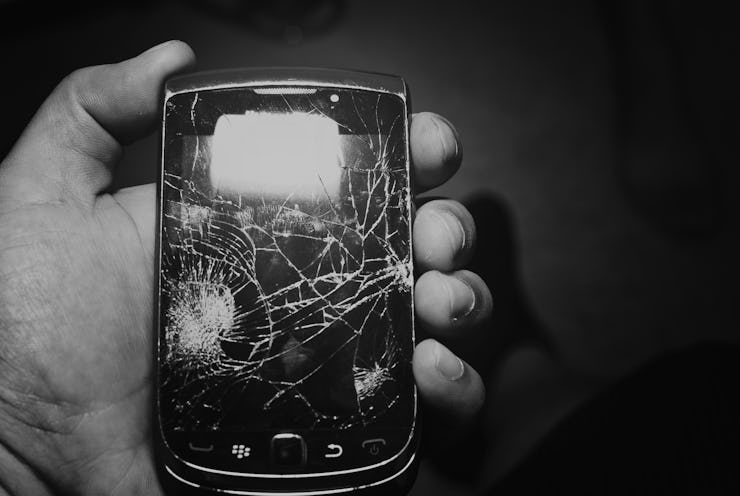Skin-Like, Self-Healing Coating Means End of Cracked Phones, Says Scientist
The best features of skin and teeth in one product.

Imagine a cellphone that can heal from cuts and scratches just like the human body can. For Chinese researcher Ming Yang and his team at the Harbin Institute of Technology, it’s not really a question of imagining anymore: They have developed a new kind of smart coating that manages to be both soft and hard, not unlike our own skin.
“We designed a self-healing coating with a hardness that even approaches tooth enamel by mimicking the structure of epidermis,” Yang tells Inverse. “This is the most desirable property combination in the current self-healing materials and coatings.”
As described in a paper published Wednesday in ACS Nano, this new material is far from the first smart coating, with previous research looking at both soft and hard coating options. Yang says there’s serious global need for better self-healing materials.
“Nowadays people always talk about environment and energy,” he says. “A self-healing material can help save a lot of money and energy using a smart, environmental friendly way. But the current self-healing materials and coatings are typically soft and wear out quickly. This can bring potential problems about the management of plastic waste.”
This new material could solve those waste problems, as it comes closer than any predecessor to combining the flexibility of a soft coating and the resilience of a hard coating, without the short lifespan of the former or the brittleness of the latter. This could be the best of both worlds.
“The trick is to use artificial materials in nature’s way,” says Yang. “The multilayer structure is the key. By placing a hard layer containing graphene oxide on top of a soft layer, we create a smart hybridization you can get the most out of.”
The graphene oxide material used in the coating’s top layer is harder than skin cells, offering a toughness closer to that of teeth enamel. The amazing thing, according to Yang, is that the coating’s hard and soft layers are able to work together to create healing properties that neither could accomplish on its own.
“It is exciting to see we can integrate demanding properties in two natural structures, namely self-healing property in skin and mechanical stiffness and hardness in tooth enamel, into an artificial smart coating,” says Yang. “And this design principle is likely useful for any self-healing polymer system.”
The result is a potentially much longer-lasting smart coating that can protect anything from phones to buildings from scratches, while its bacteria-killing properties mean it could also be useful in biomedical devices.
Now it’s just a question of turning a lab creation into something that can actually reach the market. There are some practical issues that will need to be solved first for that to happen.
“The current research uses molecular assembly to achieve the desirable structure,” says Yang. “In the future, we will need a more efficient way to accelerate the production line. Spray-assisted coating can be a good choice. We are also trying to apply similar design principle to other self-healing polymers especially those are already commercially available.”
Still, Yang says he is optimistic that this smart coating could issue in the era of self-healing, scratch-proof smartphones in the relatively near future.
“I am positive that a prototype product based on our design can be available in one to two years,” says Yang. “It is however still a long way to go before a mature product can be developed, which will need many customer feedbacks and the participation of investors and potential partners. I will not be surprised if this would take five years or more.”